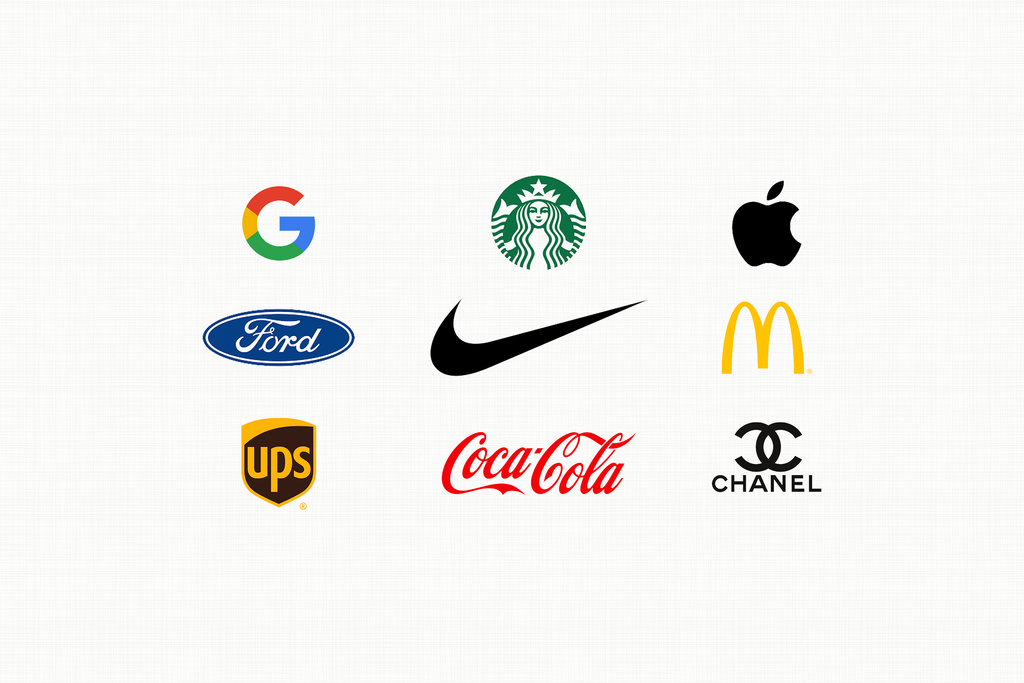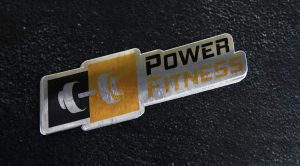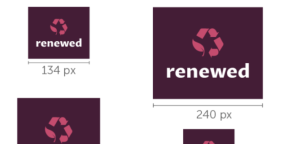When it comes to building a brand, designing a logo is one of the first steps you need to take. A logo is a visual representation of your brand that can help customers recognize and remember your business. However, not all logos are created equal. There are different types of logos, each with its own unique characteristics and purposes. In this article, we will explore the different types of logos and how to use them effectively.
One of the most common types of logos is the wordmark or logotype. This type of logo is made up of the company’s name written in a specific font or typeface. Wordmarks are simple and straightforward, making them easy to recognize and remember. They are often used by well-established brands that want to emphasize their name and reputation.
Another type of logo is the lettermark or monogram logo. This type of logo consists of the brand’s initials or a combination of letters that represent the company. Lettermarks are often used by companies with long or complicated names that are difficult to remember. They are also a good choice for companies that want to emphasize their initials or acronyms.
Understanding Logo Types
When it comes to creating a logo for your brand, it’s important to understand the different types of logos available. A logo is a visual representation of your brand, and it’s essential to choose the right type of logo that reflects your brand’s values, mission, and vision. In this section, we’ll explore the different types of logos and help you understand which one is right for your brand.
Types of Logos
There are several types of logos, and each one has its unique characteristics. Here are some of the most common types of logos:
- Wordmark logos: These logos consist of text only and are often used by companies with short names or a unique font style.
- Lettermark logos: These logos use initials or abbreviations of the company name to create a unique mark.
- Pictorial mark logos: These logos use a simple image to represent the brand. They are often used by companies with a strong visual identity.
- Abstract logo marks: These logos use abstract shapes and forms to represent the brand. They are often used by companies that want to convey a sense of creativity and innovation.
- Mascot logos: These logos use a character or mascot to represent the brand. They are often used by companies that want to appeal to a younger audience.
- Combination mark logos: These logos combine text and images to create a unique mark. They are often used by companies that want to convey a sense of professionalism and creativity.
- Emblem logos: These logos use text and imagery inside a shape or icon to create a unique mark. They are often used by companies with a strong brand identity.
Choosing the Right Logo
Choosing the right logo for your brand can be a daunting task. It’s important to consider your brand’s values, mission, and vision when selecting a logo type. A professional logo can help you establish a strong brand identity and create a positive image for your company.
When choosing a logo type, consider the following:
- Your brand’s values and mission
- Your target audience
- The industry you’re in
- Your competition
- Your brand’s visual identity
In conclusion, understanding the different types of logos available can help you choose the right one for your brand. A professional logo can help you establish a strong brand identity and create a positive image for your company. Consider your brand’s values, mission, and vision when selecting a logo type, and choose one that reflects your brand’s personality and values.
Monogram and Lettermark Logos
When it comes to creating a logo, there are many different types to choose from. Two popular options are monogram logos and lettermark logos. Both of these types of logos use typography to create a simple, yet memorable, design.
Monogram Logos
Monogram logos are created by combining two or more letters to form a single symbol. This type of logo is often used by companies with long names, such as Hewlett-Packard (HP) or International Business Machines (IBM). By using a monogram logo, these companies are able to create a simple and recognizable design that can be used across a variety of mediums.
One of the benefits of using a monogram logo is its simplicity. By using only a few letters, the design is easy to recognize and remember. Additionally, the font used in a monogram logo can help convey the brand’s personality. For example, a serif font can give the logo a more traditional and sophisticated feel, while a sans-serif font can make the logo feel more modern and sleek.
Lettermark Logos
Lettermark logos, also known as initials logos, are similar to monogram logos in that they use typography to create a simple design. However, instead of combining two or more letters, lettermark logos use the initials of the company’s name.
One advantage of using a lettermark logo is that it can help to create brand recognition. For example, CNN and HBO both use lettermark logos, and their logos are instantly recognizable to their audiences. Additionally, lettermark logos can be easier to read than logos that use the full name of the company, especially if the name is long or difficult to pronounce.
When creating a lettermark logo, it’s important to choose a font that is easy to read and reflects the brand’s personality. A bold, sans-serif font can give the logo a modern and edgy feel, while a more traditional serif font can give the logo a classic and sophisticated look.
In conclusion, monogram and lettermark logos are both great options for companies looking to create a simple and memorable logo. By using typography to create a design, these logos can convey the brand’s personality and create brand recognition. Whether you choose a monogram logo or a lettermark logo, make sure to choose a font that reflects your brand’s personality and is easy to read.
Wordmark Logos
Wordmark logos are a type of logo that is made up of the brand or company name in a stylized font or typography. They are also known as logotypes and can include monogram logo variations for smaller spaces like social media profiles and favicons. These logos are simple and straightforward, with typography and spacing being extra important.
The advantage of using a wordmark logo is that it can effectively establish a brand identity by being memorable and traditional. The typography used in a wordmark logo can convey the brand’s personality, and the font choice can help create a unique visual identity.
Some of the most famous wordmark logos include Google, Coca-Cola, and Calvin Klein. These logos have become iconic and are instantly recognizable worldwide.
When designing a wordmark logo, it is essential to ensure that it is legible and easy to read. The font should be chosen based on the brand’s personality and target audience. It is also important to consider the color scheme and any additional design elements that can help make the logo stand out.
Overall, wordmark logos are a great choice for branding as they are simple, memorable, and can effectively communicate a brand’s identity.
Pictorial and Abstract Logos
Logos can be categorized into many types based on their design. Two such types are Pictorial Marks and Abstract Logos. In this section, we will discuss these two types of logos and their unique characteristics.
Pictorial Marks
Pictorial marks are logos that use a recognizable image or symbol to represent a brand. These logos are often simple, yet powerful, and can help create strong brand recognition. Examples of pictorial marks include the Apple logo, the Twitter bird, and the Adidas flower.
Pictorial marks are ideal for businesses that want a logo that is easy to recognize and remember. They work particularly well for companies that are in industries where visual representation is important, such as fashion or food.
Abstract Logos
Abstract logos are logos that use geometric forms, shapes, or other abstract elements to represent a brand. These logos are often unique and can help a company stand out from its competitors. Examples of abstract logos include the Nike Swoosh and the Adidas stripes.
Abstract logos are ideal for businesses that want a logo that is unique and modern. They work particularly well for companies that are in industries where creativity and innovation are valued, such as technology or design.
Abstract Logo Marks
Abstract logo marks are a type of abstract logo that consists of a symbol or shape that represents a brand. These logos are often simple yet memorable and can help create strong brand recognition. Examples of abstract logo marks include the Pepsi Globe and the Mastercard circles.
Abstract logo marks are ideal for businesses that want a logo that is simple yet memorable. They work particularly well for companies that are in industries where brand recognition is important, such as finance or retail.
Abstract Mark
An abstract mark is a type of abstract logo that uses a unique shape or design to represent a brand. These logos are often creative and can help a company stand out from its competitors. Examples of abstract marks include the BP Helios and the Adidas trefoil.
Abstract marks are ideal for businesses that want a logo that is creative and memorable. They work particularly well for companies that are in industries where creativity and innovation are valued, such as advertising or entertainment.
In conclusion, Pictorial Marks and Abstract Logos are two types of logos that can help businesses create strong brand recognition and stand out from their competitors. Whether you choose a Pictorial Mark or an Abstract Logo, it is important to choose a design that is unique, memorable, and represents your brand in the best possible way.
Mascot Logos
Mascot logos are a type of logo that features an illustrated character or cartoonish figure as the main element of the design. These logos are often used by sports teams, schools, and companies that want to create a fun and approachable brand image.
One of the most famous examples of a mascot logo is KFC’s Colonel Sanders. The Colonel has become an iconic symbol of the fast-food chain, and his likeness is instantly recognizable to people all over the world.
Mascot logos are a great way to add personality to your brand and create a memorable image that people will associate with your company. They can be used in a variety of ways, from product packaging to advertising campaigns, and they are often more effective at catching people’s attention than other types of logos.
When designing a mascot logo, it’s important to keep in mind the personality and values of your brand. The mascot should reflect these qualities and help to reinforce them in the minds of your audience. It’s also important to make sure that the mascot is unique and memorable, so that it stands out from other logos in your industry.
Overall, mascot logos are a fun and effective way to build a strong brand image and connect with your audience on a more personal level. Whether you’re a sports team, a school, or a company, a well-designed mascot logo can help to set you apart from the competition and create a lasting impression in the minds of your customers.
Combination Mark Logos
Combination mark logos are a type of logo that combines both text and symbol elements to create a unique identity for a brand. This type of logo is versatile and can be used in a variety of contexts, making it a popular choice for many businesses.
The combination mark logo is made up of two different elements: text (logotype) and icon (illustrative elements). The text is usually the brand name or initials spelled out in a specified font, while the icon is a shape or object that helps represent the company.
One advantage of a combination mark logo is that it allows for both the name and symbol to be easily recognized and associated with the brand. This makes it easier for customers to remember the brand and creates a stronger brand identity.
Another advantage of combination mark logos is that they can be easily adapted for different uses. For example, the text and icon can be separated and used independently, depending on the context. This makes the logo more versatile and allows it to be used in a variety of marketing materials.
Overall, combination mark logos are a great choice for businesses that want to create a strong, recognizable brand identity. By combining text and symbol elements, these logos are versatile, memorable, and easily recognizable.
Logo Design Tips
When it comes to creating a logo, there are a few key tips that you should keep in mind to ensure that your logo is effective in representing your brand. Here are some logo design tips that you should consider:
Keep it Simple
One of the most important things to keep in mind when designing a logo is to keep it simple. A simple logo is easier to recognize and remember, which is important when it comes to building brand recognition. A logo that is too complex or busy can be confusing and difficult to read, which can turn off potential customers.
Make it Distinct
Your logo should be distinct and easily recognizable. It should stand out from the competition and be memorable. One way to make your logo distinct is to use a unique color scheme or typography. You can also use images or symbols that are associated with your brand to make your logo more memorable.
Consider Your Brand
Your logo should be a reflection of your brand. It should convey the values and personality of your brand to your customers. Consider the emotions that you want to evoke in your customers when they see your logo. Do you want your logo to be playful and fun or high-end and sophisticated? Your logo should be consistent with your brand identity.
Keep it Catchy
Your logo should be catchy and easy to remember. A catchy logo can help to build brand recognition and make your brand more memorable. Consider using a tagline or slogan with your logo to make it more memorable.
Use Color Wisely
Color can play a big role in the effectiveness of your logo. Different colors can evoke different emotions in your customers. For example, red can evoke feelings of excitement and passion, while blue can evoke feelings of trust and reliability. Consider the emotions that you want to evoke in your customers when choosing the colors for your logo.
Typography Matters
The typography that you choose for your logo can also have an impact on its effectiveness. Consider using a clean and simple font that is easy to read. Avoid using overly decorative fonts that can be difficult to read and may not be appropriate for all applications.
Streamline Your Design
Finally, it is important to streamline your logo design. Your logo should be adaptable to different applications, such as print and digital media. A streamlined logo design can help to ensure that your logo is effective in all applications and can be easily recognized by your customers.
By following these logo design tips, you can create a logo that effectively represents your brand and helps to build brand recognition with your customers.
Logo Design Tools
When it comes to designing a logo, there are many tools available to help you create a professional-looking design. Whether you are a beginner or an experienced designer, there is a tool out there that can help you bring your vision to life.
One popular option is logo maker software. These tools typically offer a range of templates and design elements that you can customize to create a unique logo. Some examples of logo maker software include Canva, Logojoy, and Tailor Brands.
If you prefer more control over the design process, you may want to use a graphic design tool like Adobe Illustrator or Sketch. These tools allow you to create a logo from scratch using a variety of design elements and tools. However, they do require a bit more skill and experience to use effectively.
In addition to these software options, there are also many online resources and communities where you can learn more about logo design and improve your skills. For example, websites like 99designs and Upwork offer freelance design services and resources for designers.
Ultimately, the key to creating a great logo is to find a tool or approach that works for you and your design style. Whether you choose to use a logo maker, graphic design software, or a combination of both, the most important thing is to keep your design simple, memorable, and reflective of your brand.
Legal and Governmental Aspects of Logos
When it comes to logos, there are various legal and governmental aspects that you need to consider. These aspects ensure that you don’t infringe on anyone’s rights and that you comply with the law. In this section, we will discuss some of the most important legal and governmental aspects of logos.
Legal Aspects of Logos
Logos are subject to various legal protections, including trademarks, copyrights, and patents. These protections ensure that the logo’s owner has exclusive rights to use, reproduce, and distribute the logo. If you use someone else’s logo without their permission, you could be sued for copyright infringement, trademark infringement, or other legal violations.
If you are designing a logo for your business, it is essential to ensure that it is original and does not infringe on anyone else’s rights. You can do this by conducting a trademark search to ensure that your logo is not similar to any existing trademarks. You can also hire a lawyer to help you navigate the legal aspects of logo design.
Governmental Aspects of Logos
Governmental agencies, such as the Department of Commerce, have policies governing the use of their logos, emblems, and insignia. If you want to use a government agency’s logo, you must comply with their policies and obtain permission to use it. Failure to do so could result in legal action against you.
Credit card companies also have strict policies governing the use of their logos. If you want to use a credit card company’s logo, you must comply with their policies and obtain permission to use it. Failure to do so could result in legal action against you.
In conclusion, legal and governmental aspects of logos are essential to consider when designing a logo. These aspects ensure that you don’t infringe on anyone’s rights and that you comply with the law. By being aware of these aspects, you can create a logo that is both unique and legally compliant.
The Role of Logos in Business and Marketing
Logos play a crucial role in business and marketing. They serve as the face of a business and help to establish its brand identity. A well-designed logo can convey a business’s professionalism, mission, and brand message in a single image. It is one of the most important aspects of a brand’s identity, making it essential to get it right.
For a new business, a logo is especially important as it can help establish brand recognition and credibility. It is often the first impression that potential customers have of a business, making it critical to create a logo that accurately represents the brand. A professional logo can also help to differentiate a business from its competitors and make it stand out in a crowded market.
Logos are also an important component of marketing materials. They can be used on business cards, brochures, websites, and social media profiles to create a consistent brand message across all channels. A logo can help to establish a business’s target audience and convey its strengths and values.
One example of a successful logo is Pepsi’s logo. The logo has undergone several redesigns over the years, but it has always maintained its iconic red, white, and blue color scheme. The logo is simple yet memorable, making it instantly recognizable to consumers. It has helped Pepsi establish itself as a leading brand in the soft drink industry.
When creating a logo, it is important to consider the vendor or designer who will be creating it. Choose a vendor with experience in logo design and a portfolio that demonstrates their skills. Be clear about your brand message and mission, as this will help the designer create a logo that accurately represents your business.
In conclusion, logos play a critical role in business and marketing. They are essential in establishing brand recognition, conveying a brand’s message, and differentiating a business from its competitors. A well-designed logo can help to establish credibility and create a consistent brand message across all marketing materials.
Marietta Arnold is a branding and design enthusiast who draws inspiration from hobbies like hiking, photography, and art exploration. With a background in graphic design, she shares insights on branding strategies and logo design trends. Stay updated with Marietta’s work for the latest in branding and design.



